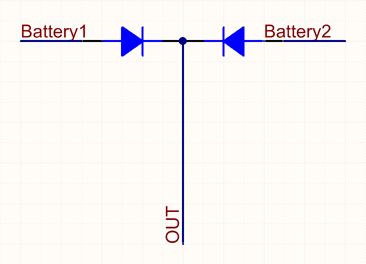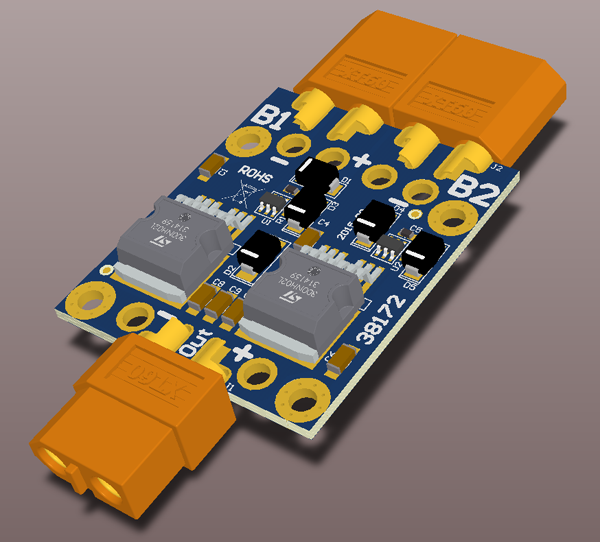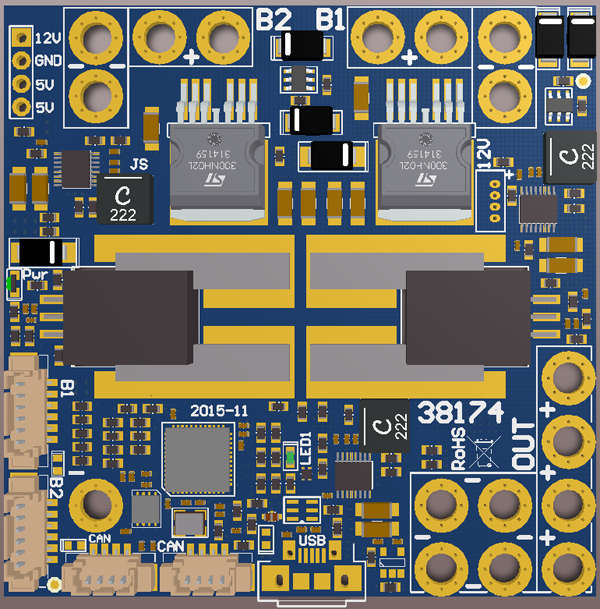Redundant power distribution boards for 3S to 10S (with reverse voltage protection)
The trend in the design of professional drones is redundancy. Single points of failure sour be avoided. But how can two flight batteries may be connected in parallel to increase power and to improve reliability? Simply connecting two batteries in parallel is a tricky issue and should be handled with extreme care only by an experienced user. The batteries need to be of similar kind and should be equally charged. If not there will be a current flowing from one battery into the other. As the current is just limited by the internal resistance of the battery pack, this can be a very high current. This may be not healthy for the battery and the operator.
|
It would be far better to take the classical approach. Just use two diodes (see picture below) to merge the packs and to avoid that one pack charges the other. However high current diodes are bulky and hard to find. But the biggest problem is the fairly high voltage drop across the diode. At high currents this means very high power dissipation. But please have a look at the simple schematic with the 2 diodes. It explains the concept. So what we really need is an ideal diode. No voltage drop at high currents. Now this is impossible. But we can come close by using a high current MOSFET with some supervising logic. It checks the direction of current flowing. If the current wants to enter the pack, then the logic quickly turns off the MOSFET and blocks the current. So with this we have a diode with a very low resistance (in the products brow the Rds is 1.4 mOhm typically). Example: If 100A are sourced in total and both packs are equally charged and provide 50A each, then 50x50x0.0014 = 3.5 watts are dissipated in each MOSFET. So for both this is 7 watts. This may sound pretty high. But at 100A and 10S we are sourcing 3700 watts out of the battery. So we are wasting just 0.19%. This sounds much better. |
 |
 |
Ideal diode for 2 batteries
|
 |
Power distribution board for 2 batteries
|


